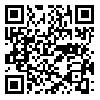Volume 13, Issue 11 (2-2014)
Iranian Journal of Medical Education 2014, 13(11): 907-919 |
Back to browse issues page
Download citation:
BibTeX | RIS | EndNote | Medlars | ProCite | Reference Manager | RefWorks
Send citation to:



BibTeX | RIS | EndNote | Medlars | ProCite | Reference Manager | RefWorks
Send citation to:
Ahanchian M R, Bahmanabadi S, Arfa Balochi F. Predicting Students’ Self-Regulation based on their Personality Styles (NEO) in Faculty of Nursing and Midwifery of Mashhad University of Medical Sciences. Iranian Journal of Medical Education 2014; 13 (11) :907-919
URL: http://ijme.mui.ac.ir/article-1-2737-en.html
URL: http://ijme.mui.ac.ir/article-1-2737-en.html
, ahanchi8@um.ac.ir
Abstract: (8295 Views)
Introduction: One of the main goals of nursing education is to train nurses who can provide individuals with meritorious and qualified services employing their knowledge and competency. It calls for nurses to have self-regulated skills in learning and several factors are involved in self-regulation. Therefore, this study aims to investigate the role of five styles of personality inn self-regulation among students of faculty of nursing and midwifery of Mashhad University of Medical Sciences.
Methods: In this descriptive correlational research, study population included all female and male students in faculty of nursing and midwifery of Mashhad University of Medical Sciences during 2011-12 academic years. Using Morgan’s Table, 200 samples were selected through single-stage cluster sampling. Data was gathered usig five-factor personality styles (NEO-FFI) and general self-regulation Miller and Brown questionnaires. Data was analyzed using regression analysis and multivariate analysis of variance (MANOVA).
Results: Simultaneous regression analysis showed that out of five dimensions of personality, only two dimensions of extroversion and conscientiousness could predict self-regulation performing and planning dimensions (p<0.05). In addition, among five dimensions of personality, only neuroticism was able to predict research and evaluation dimensions of self-regulation (p<0.01). The results of multivariate analysis of variance (MANOVA) showed a significant difference between male and female students in all dimensions of personality except neuroticism (p<0.05). Moreover, there was a significant difference between male and female students regarding self-regulation dimensions (p<0.05).
Conclusion: According to the findings of the study, the educators and teachers of nursing and midwifery are recommended to pay attention to personality dimensions of students and strive to increase students’ increase self-regulation and self-disciplining considering their personality.
Type of Study: Original research article |
Subject:
other
Received: 2013/06/19 | Accepted: 2013/10/31 | Published: 2014/01/25 | ePublished: 2014/01/25
Received: 2013/06/19 | Accepted: 2013/10/31 | Published: 2014/01/25 | ePublished: 2014/01/25
پرسشنامه خودتنظیمی [DOCX 22 KB] (636 Download)
Send email to the article author
| Rights and permissions | |
 |
This work is licensed under a Creative Commons Attribution-NonCommercial 4.0 International License. |




